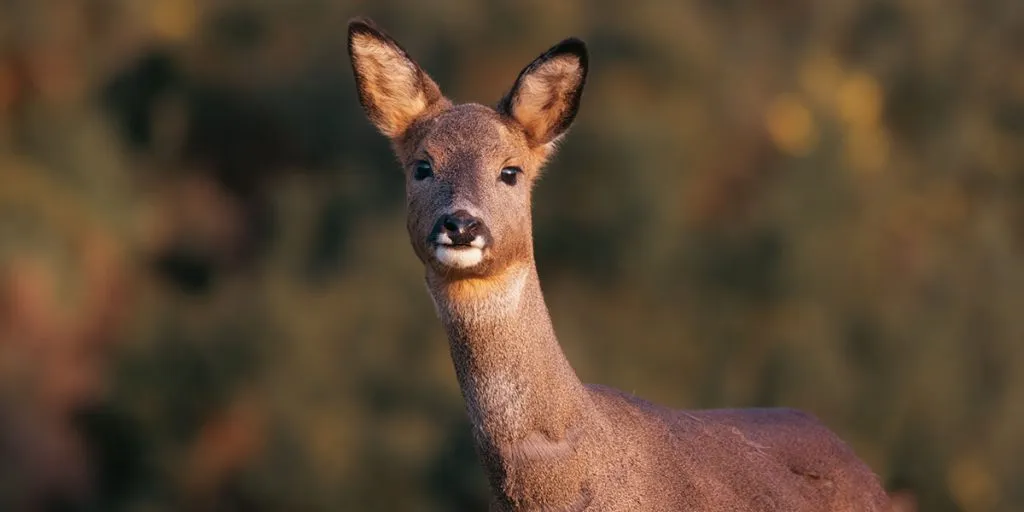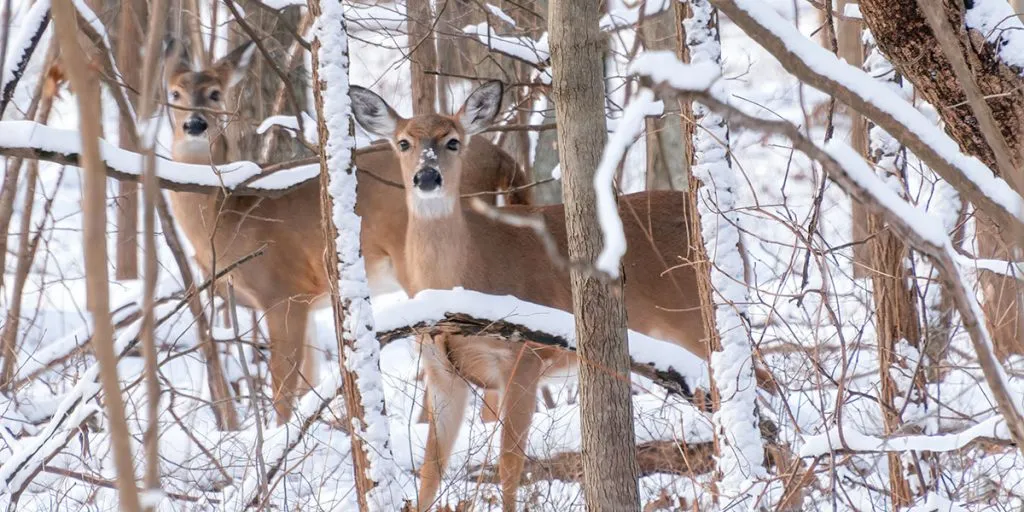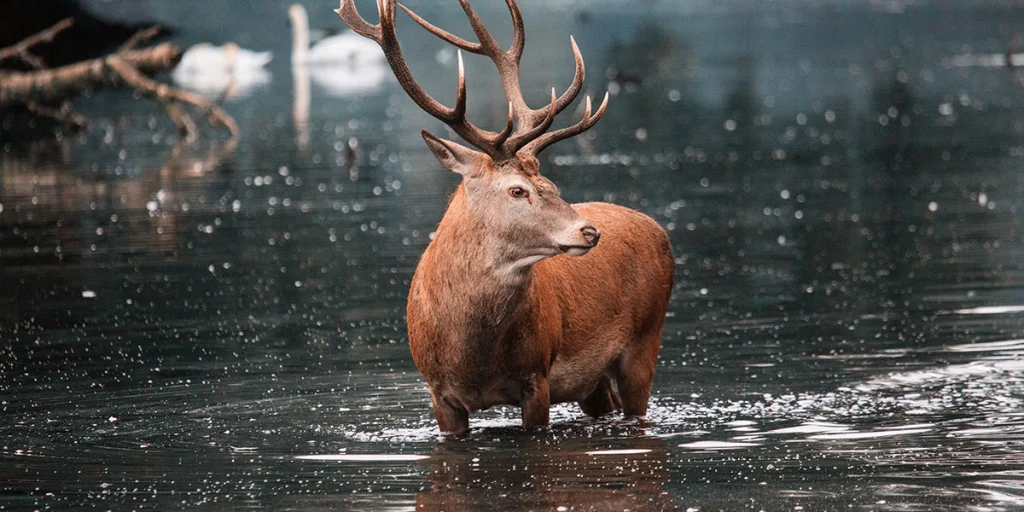While some deer species are thriving, others are struggling to survive. Endangered deer species are found all over the world, with a wide range of problems causing them harm.
But it’s not all doom and gloom for the highly threatened deer species. Conservation efforts have also seen great successes, both in the past and today. Because conservation and preservation are ongoing efforts, the information in the overview below is subject to change.
If you wish to help to preserve these and other critically endangered animals, consider making a donation to one of these environmental charities.
1. Père David’s Deer
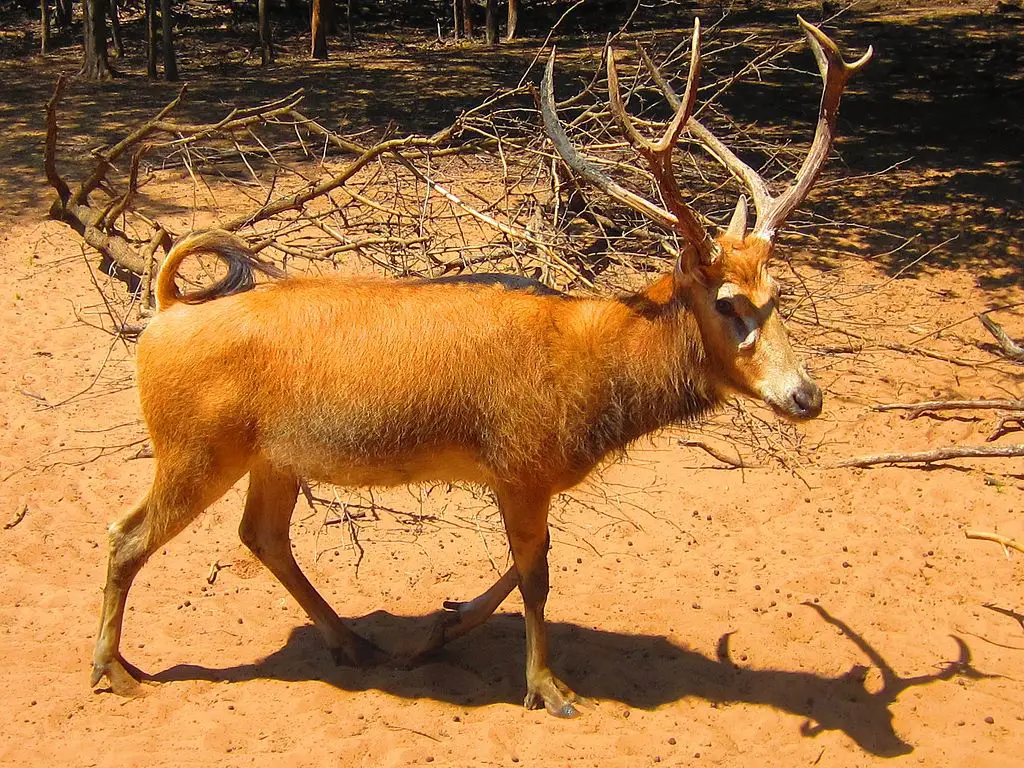
Père David’s Deer (Elaphurus davidianus), also known as the milu or elaphure, is an Asian deer species that was previously declared extinct in the wild in the 1800s. The animals were successfully reintroduced to their native river valleys of China, almost 40 years ago.
The reintroduction of extinct animals into the wild is not unheard of, and has successfully helped restore degraded ecosystems in the past. Conservationists were able to reverse the extinction of the Chinese deer species, resulting in a thriving population.
There are currently more than 50 herds roaming the river plains of China, making up at least 2400 wild individuals. Despite the success, there are plenty of challenges facing the fragile groups, including the risk of diseases and lack of conservation coordination.
The IUCN still places the Père David’s Deer on the Red List as ‘Extinct in the wild‘ as of 2016, despite their reintroduction.
Found in: China
Status: Extinct in the wild (Critically endangered)
Estimated population left: 8000+ individuals (source)
2. Bawean Deer
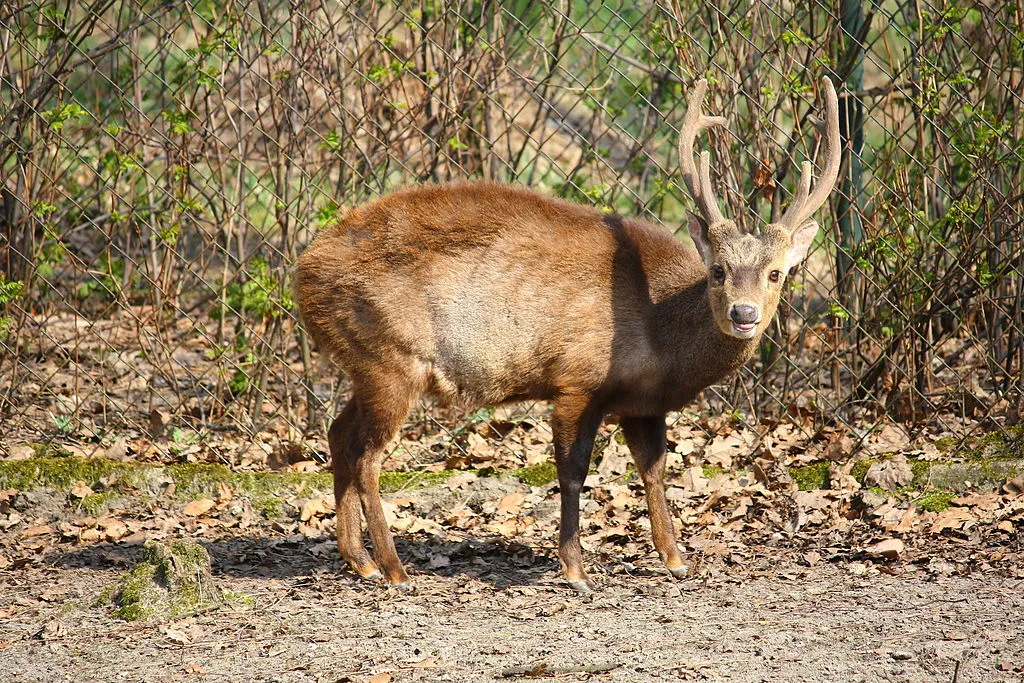
Bawean deer (Axis kuhlii), also called Kuhl’s deer or Bawean hog deer, is an extremely rare island-dwelling species. They exclusively live on the Indonesian island Bawean, a relatively remote small island in the middle of the Java Sea.
The small animals (they don’t grow higher than 60 – 70 cm on average) have a very limited habitat, but the population is considered stable. Only the adult population is somewhat decreasing. Only 200 to 500 individuals are left in the wild, all living in one non-fragmented zone on the western part of the island.
According to a 2014 evaluation by the IUCN, the species is considered ‘Critically endangered‘.
Found in: Indonesia (Bawean island)
Status: Critically endangered
Estimated population left: 200 – 500 individuals (source)
3. Giant Muntjac
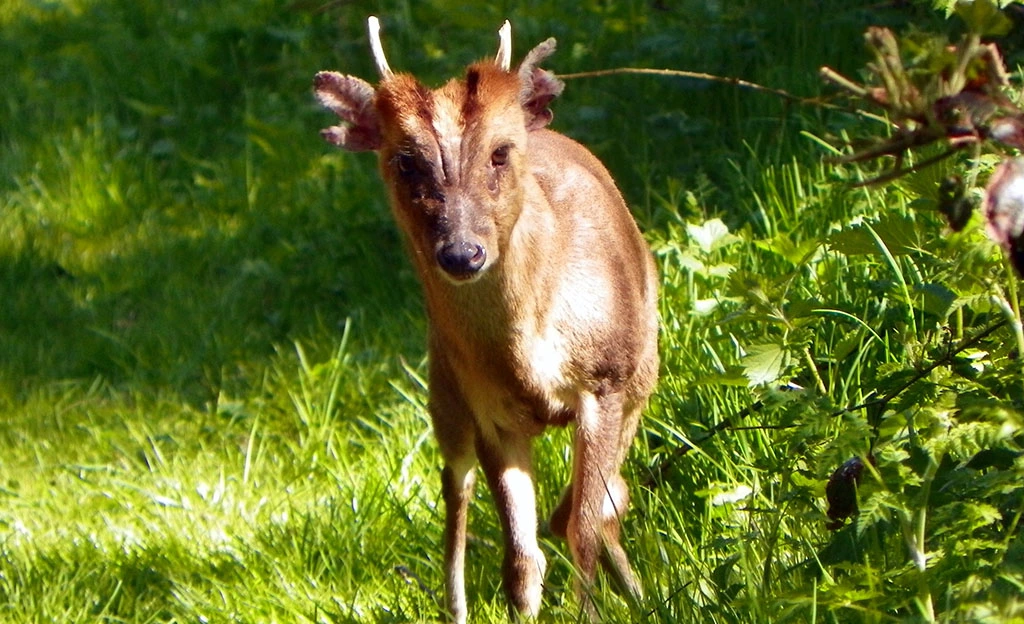
Giant Muntjac (Muntiacus vuquangensis), also known as the Large-Antlered Muntjac, is a rarely seen muntjac species that is found in Vietnam, Laos, and Eastern Cambodia. Its natural habitat is the Annamite mountain chain and the hills surrounding the chain.
Over the years, these muntjacs attained an almost mythical status because sightings in the wild have been extremely infrequent. Sadly, the animals are often the victim of snaring traps, a hunting method commonly used in Southeast Asia. However, the main reason for their sharp decline is slash-and-burn agriculture.
While conservation is possible, public awareness needs to increase and farming methods need to change. They are in fact so rare, that pictures of the animals are practically unavailable. The image above is another species of muntjac.
The IUCN has declared the Giant Muntjac a ‘Critically Endangered‘ species. It is unknown how many are left in the wild, but considering they rarely show themselves the number will be very low.
Found in: Vietnam, Laos, Cambodia
Status: Critically Endangered
Estimated population left: Unknown (Insufficient data)
4. Persian Fallow Deer
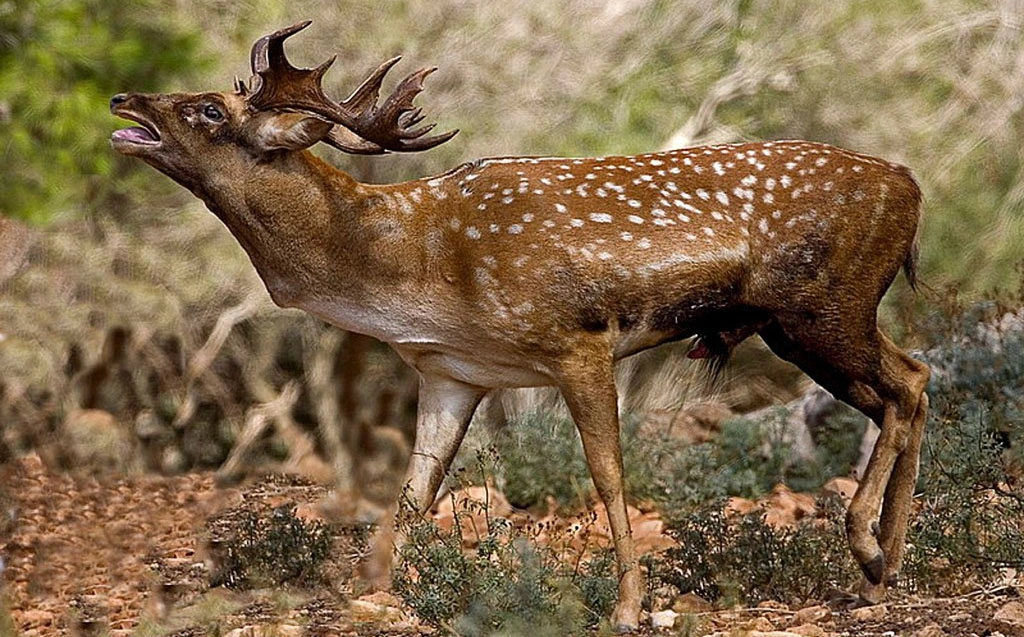
Persian Fallow Deer (Dama mesopotamica), also known as the Mesopotamian Fallow Deer, is an Iran-native endangered species. The deer once inhabited a massive region of the Middle-Eastern region, stretching out all the way to Turkey and even Jordan.
The species was recently reintroduced in the wild in Israel, where a small population now thrives. Overall, the population bounced back from only a handful of individuals to well over 1100 individuals as of 2015. A great example of a species where conservation efforts have paid off in a positive way.
Over the years, the main threats to the Person Fallow Deer have been human hunting and habitat destruction. The grazing animals are also a common victim of traffic accidents, which is also the main reason why common deer species are dangerous to humans.
According to the IUCN, the Persian Fallow Deer is slowly recovering, yet still listed as ‘Endangered‘ on the Red List.
Found in: Iran, Israel
Status: Endangered
Estimated population left: 1100+ individuals (source)
5. Calamian Deer
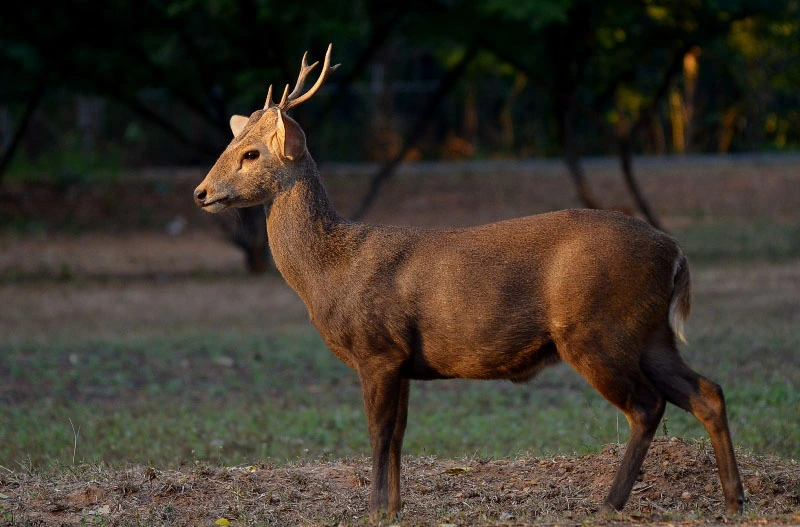
Calamian Deer (Axis calamianensis) are also known as the Calamian Hog Deer, is an endangered species from the islands with the same name. Located in the Palawan province of The Philippines, these island-dwelling deer are considered endangered.
An estimated 500 individuals remain in the wild around the turn of the millennium, but their numbers vary wildly over time.
Habitat destruction due to agricultural expansion cause the Calamian Deer to continue to be threatened. On top of this, human poaching for various reasons further puts pressure on the already small population. The fact that they live on relatively small islands also does not help the animals.
As a result of a 2014 analysis, the INCU has declared this species as ‘Endangered‘.
Found in: The Philippines (Calamian islands, Palawan province)
Status: Endangered
Estimated population left: 200 -1200 individuals (source)
6. Visayan Spotted Deer
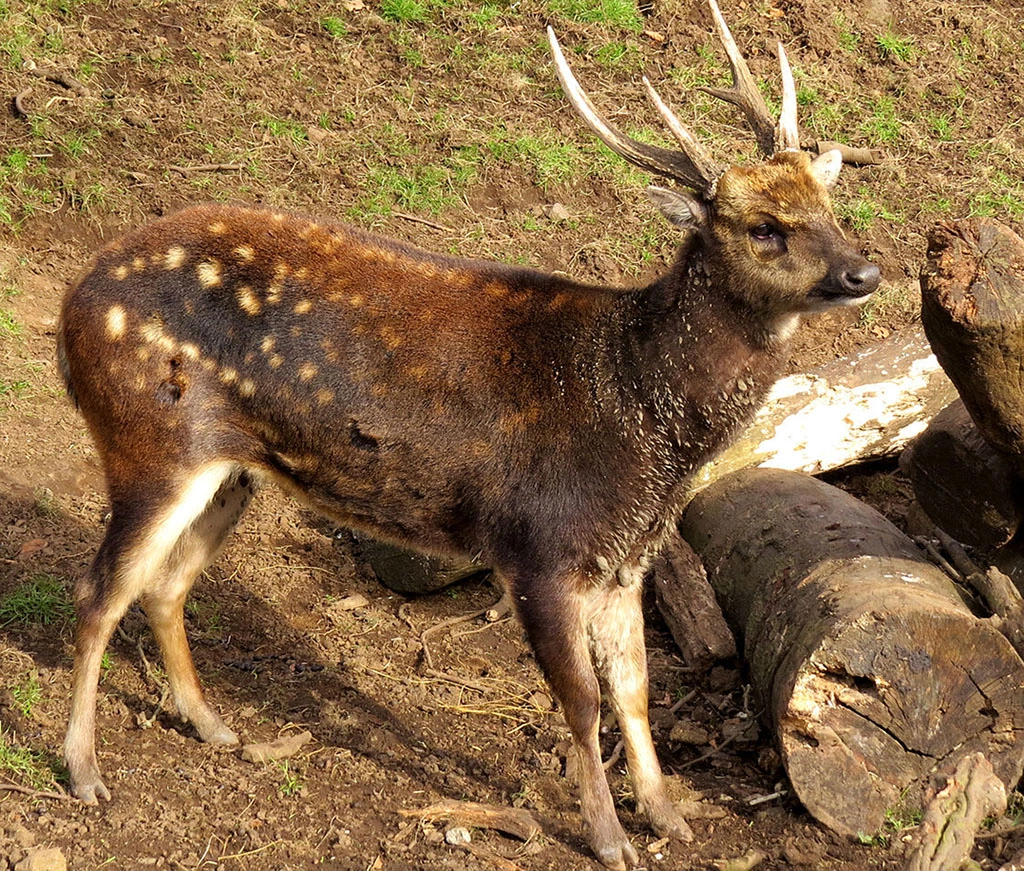
Visayan Spotted Deer (Rusa alfredi), also known as the Philippine Spotted Deer, or Prince Alfred Deer, is another endangered deer species that is native to The Philippines. This is where they roam the rainforests of multiple tropical islands.
While more widespread than the Calamian Deer, their numbers are still very limited at around 2500 individuals, of which only 700 individuals are estimated to survive in the wild (down from a number of 1600 individuals). Real numbers are hard to come by due to their inaccessible habitat.
Visayan Spotted Deer were not recognized as a unique species until the year 1983. They have suffered immensely as a result of deforestation due to logging. Hunting is another major cause of their population decline.
The IUCN is deeply worried about their chances of survival and expects their numbers to sharply decrease. They are currently listed as ‘Endangered‘ on the IUCN Red List.
Found in: The Philippines
Status: Endangered
Estimated population left: 700 individuals (source)
7. South Andean Deer
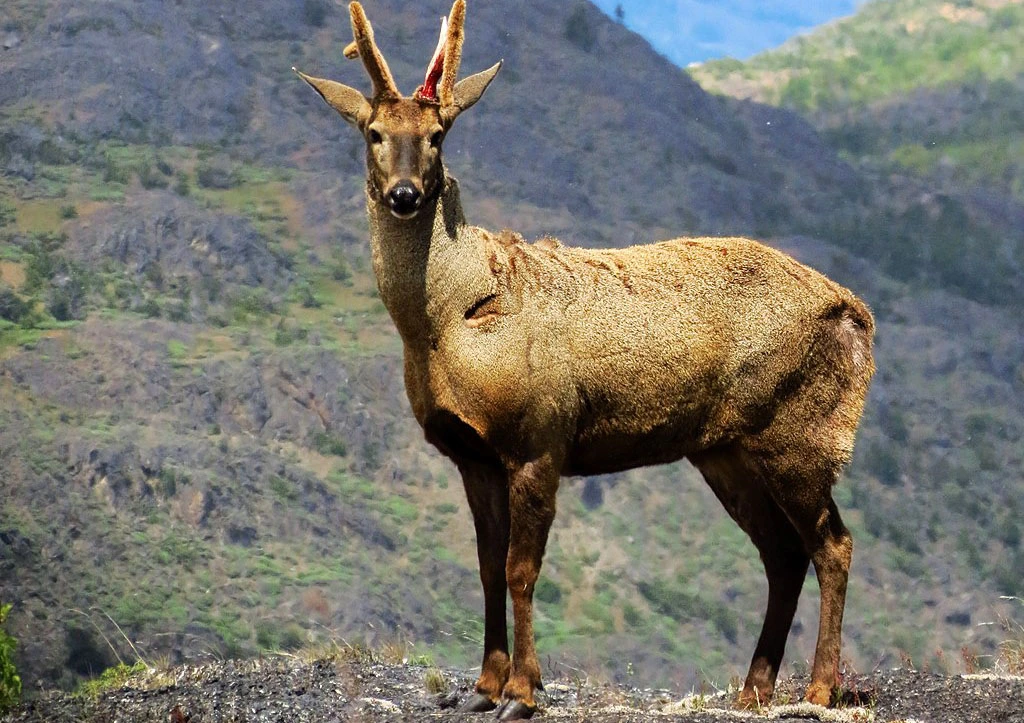
South Andean Deer (Hippocamelus bisulcus), also known as the Patagonian Huemul, Southern Guemal, or Chilean Huemul, are an endangered deer species native to the mountains of Patagonia (Chile and Argentina).
The remaining population is especially critical in Argentina, where only 350 – 600 individuals remain in a highly fragmented habitat. A slightly larger population still remains across the border in Chile. The number of wild individuals is still declining across the board.
Some of the major issues facing the South Andean Deer are related to invasive species, which put great pressure on their diet. Other influences putting pressure on the population include economic activities like poaching and habitat destruction, as well as natural predators (e.g. cougars).
The IUCN has declared the South Andean Deer to be an ‘Endangered‘ species with a decreasing wild population.
Found in: Chile, Argentina
Status: Endangered
Estimated population left: 1000 -1500 individuals (source)

